Winds of history still blowing strong – By Diane Morey Sitton
Determining wind direction is simple. You can observe ripples in a pond or the fluttering of foliage. You can monitor the drift of a balloon or the tug of a kite. You can watch which way tall grass sways. If all else fails, you can act like a kid again by licking your finger, rotating it skyward, and waiting until you feel the cool rush that comes from moving air.
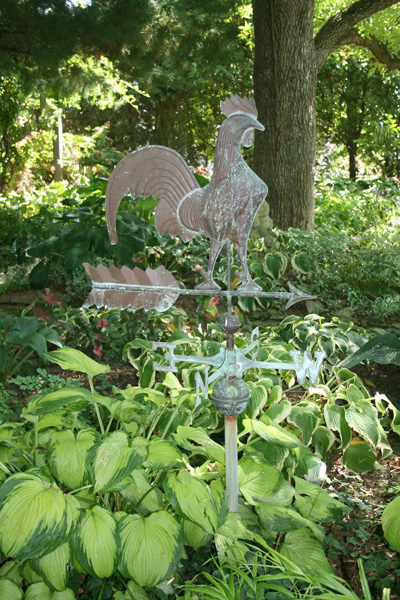
But wouldn’t you rather determine wind direction by displaying a weather vane – a decoratively-styled wind instrument that comes with a 2,000-year-old reputation for being a tool, symbol and work of art?
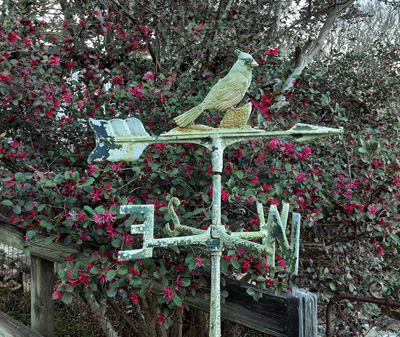
It’s a reputation that’s well-founded.
Even the earliest recorded weather vane served a dual purpose. Concocted in 48 B.C. by Greek astronomer Andronicus, the nearly eight-feet-long bronze figure adorned the Tower of the Winds in Athens where it not only indicated wind direction, but honored Triton, the Greek god of the sea. The ungainly likeness was half man/half fish. To ancient Greeks, the winds possessed divine powers.
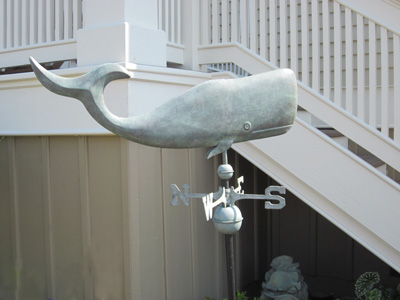
By the 9th century, unusual quadrant-shaped weather vanes depicting creatures from Norse mythology were common on Viking ships and Scandinavian churches. The 9th century also marked the onset of installing rooster weather vanes (i.e. “weather cocks”) on European church domes and steeples.
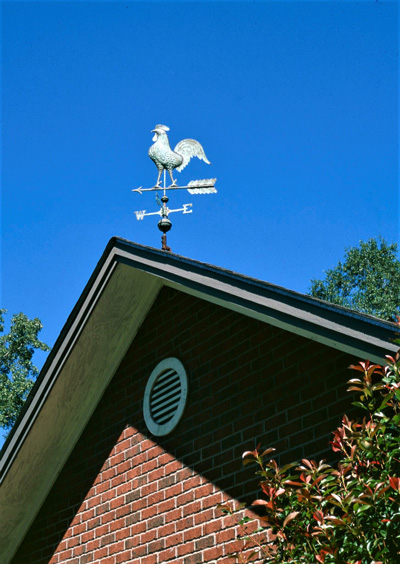
In America, weather vanes crafted by Deacon Shem Drowne (1683-1774), the country’s earliest known weather vane maker, still decorate some of Boston’s historic buildings. Drowne’s creations include the storied grasshopper (1742) that tops Faneuil Hall and the rooster on First Church in Cambridge (1721). By the early 1800s, Americans favored patriotic designs including the likeness of “Miss Liberty” and the American eagle. By mid-century, vanes of celebrity race horses became the new “must have” item. The trend was influenced by Currier and Ives prints, popular at the time. Elaborately-designed vanes reached their peak in the late 1800s during America’s Victorian heyday. Vanes featuring sports themes emerged after 1900.
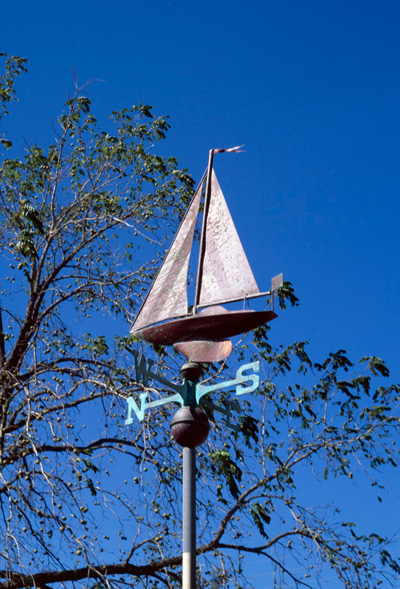
Today, artisans craft weather vanes using traditional (copper and brass) and non-traditional materials. Wind vanes, as they are also called, consist of two major parts: a rotating ornament (the arrow or pointer) and a fixed directional. When properly aligned, the directional indicates north, south, east and west. A small globe and a large globe help separate the components which are stacked atop one another on a rod. Usually, one side of the ornament is larger than the other. When wind catches the larger side, that end spins away from the wind source, thus pointing the smaller side into the wind. If the ornament points south, the wind is blowing from the south.
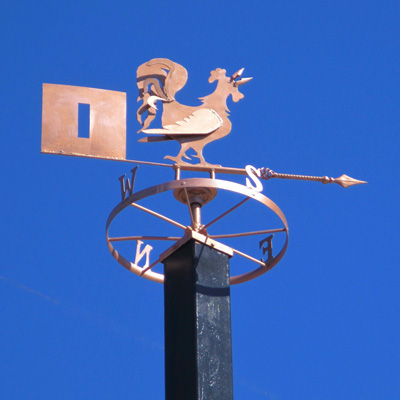
Weather vane styles include arrow vanes and scroll vanes. These classic vanes feature an arrow-like point and decorative scroll work. Banner-style vanes trace back to medieval pennants and flags. They have a pointed tip and a flat tail that is commonly inscribed with initials, symbols, logos or dates. Silhouette-styles vanes invoke images of old-world farmers who carved simple wood weather vanes for their barns. Modern silhouette vanes depict sporting events and humorous themes. Sometimes, craftsmen embellished the silhouette form with layering and intricate metalwork. Swell-bodied ornaments reflect the glory days of American weather vane artisans who crafted 3-dimensional figures by hammering sheet copper into molds. Frequently, these weather vanes portrayed farm animals.
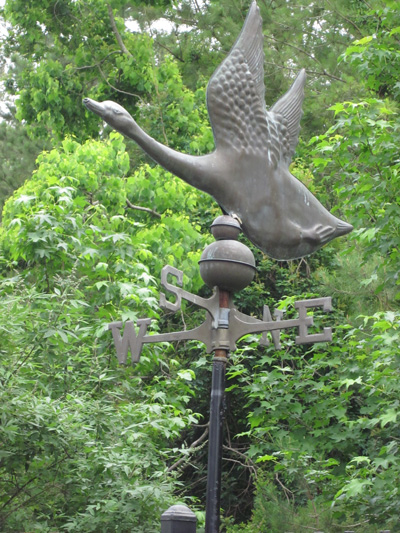
Today, despite their usefulness for indicating wind direction, weather vanes are most valued as architectural ornaments.
But there’s something more.
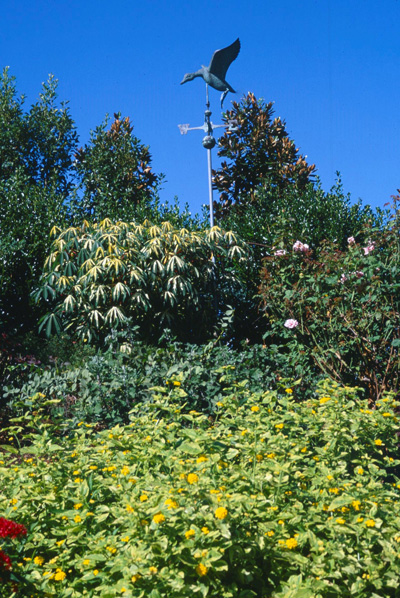
With their expressive demeanor, weathered patina, and interaction with nature’s breezes, it’s hard not to look skyward and imagine Andronicus gazing with satisfaction at his eight-feet-long weather vane as it rotated to and fro marking the winds of time.
